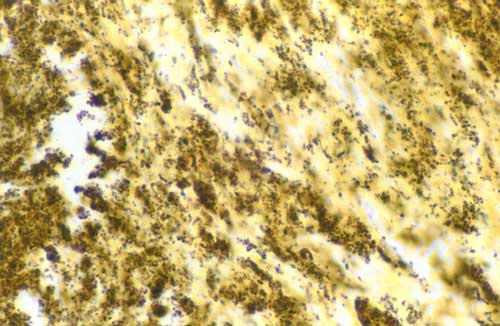Alex A Demin, Prof(*) and Vera P Drobysheva, MD. Internal Medicine, Medical Academy, Novosibirsk, Russia.
PURPOSE: Pulmonary manifestations (PM) and pulmonary oncet (PO) of infective endocarditis (IE) may resemble variety of diseases and result from systemic effects of infection, metastatic foci and emboli. The aim of the study was to determine the incidence of PM and PO in the clinical course of IE and their significance for diagnostics of disease.
METHODS: The analysis of the clinical course of 230 patients (pts) with IE was made. Diagnosis of IE was based on Duke criteria and pts were followed up at Novosibirsk IE-centre (1979-99).
RESULTS: PM was revealed in 18%, PO - in 11% of IE pts. The pulmonary symptoms included chest pain (52%), dyspnea (32%), cough (22%), hemoptysis (9%). PO of IE leaded to diagnostic mistakes in 11% of pts. Early clinical symptoms in PO of IE were fever (100%), chest pain (73%), cough (50%), dyspnoe (46%). High percentage of PM (43%) and PO (50%) of IE were revealed in patients with combined congenital heart disease. Pulmonary involvement and PO of the disease were associated with isolated tricuspid valve endocarditis in 5% and 8%, and with left-side endocarditis in 43% and 34%, acc.; in case of mitral valve affection - in 26% and 26%; and in case of aortic valve affection - in 17% and 8%, acc. Echo valvular vegetations, 10-20 mm, were revealed by transesophageal echocardiography in 59,5% of pts with PM and in 61,5% of pts with PO of the disease. The leading causative organism of IE with PM and PO were staphylococci in 73,4% and 66,6%, acc. Pulmonary emboli or pneumonia were common in intravenous drug abusers.
CONCLUSION: The incidence of PM in the clinical course of IE was rather high especially in patients with combined congenital heart disease.
CLINICAL IMPLICATIONS: The knowledge PO of disease is of important for timely diagnostics and treatment of modern IE.
COPYRIGHT 2000 American College of Chest Physicians
COPYRIGHT 2001 Gale Group



